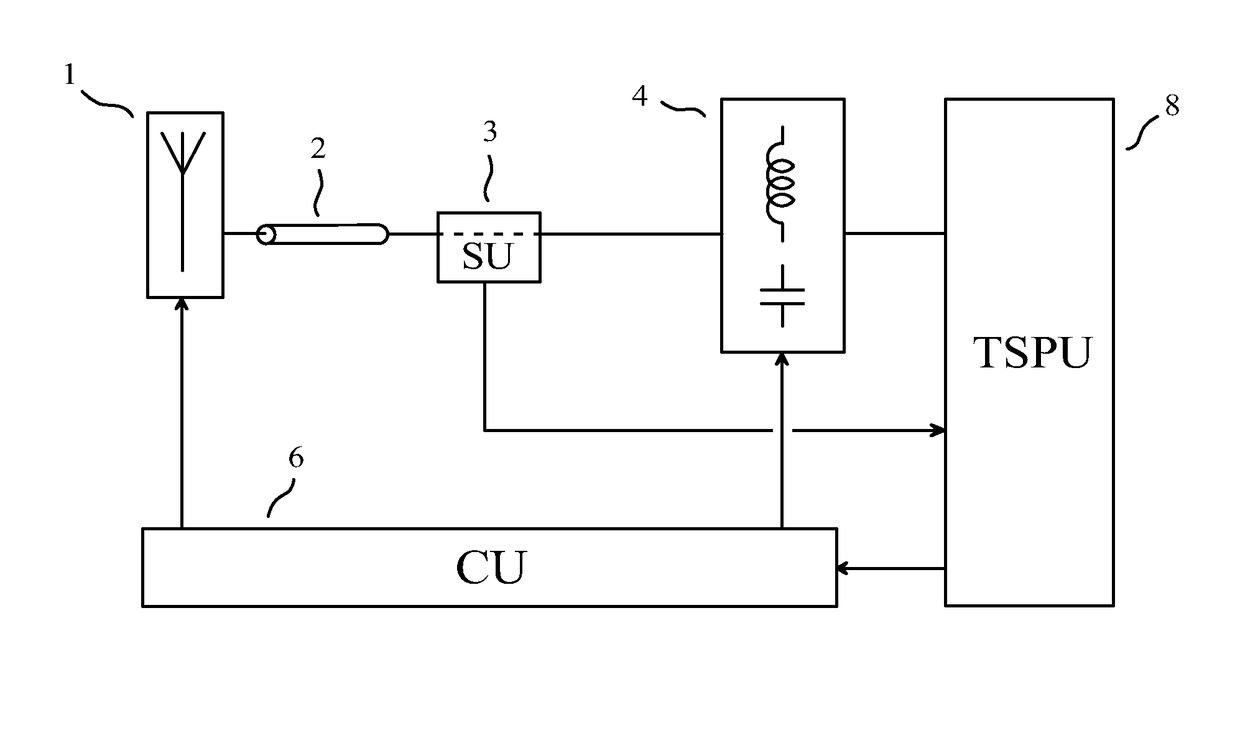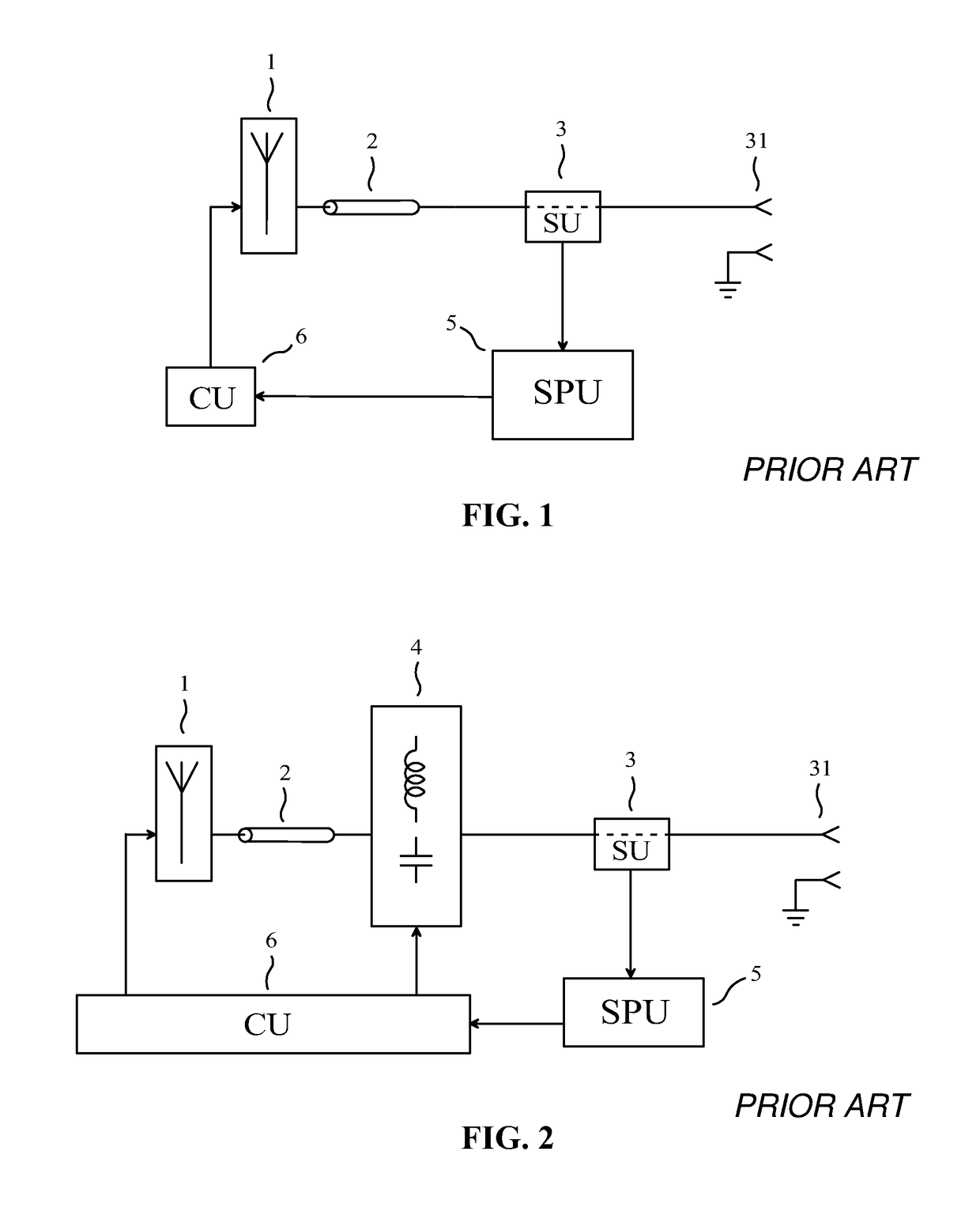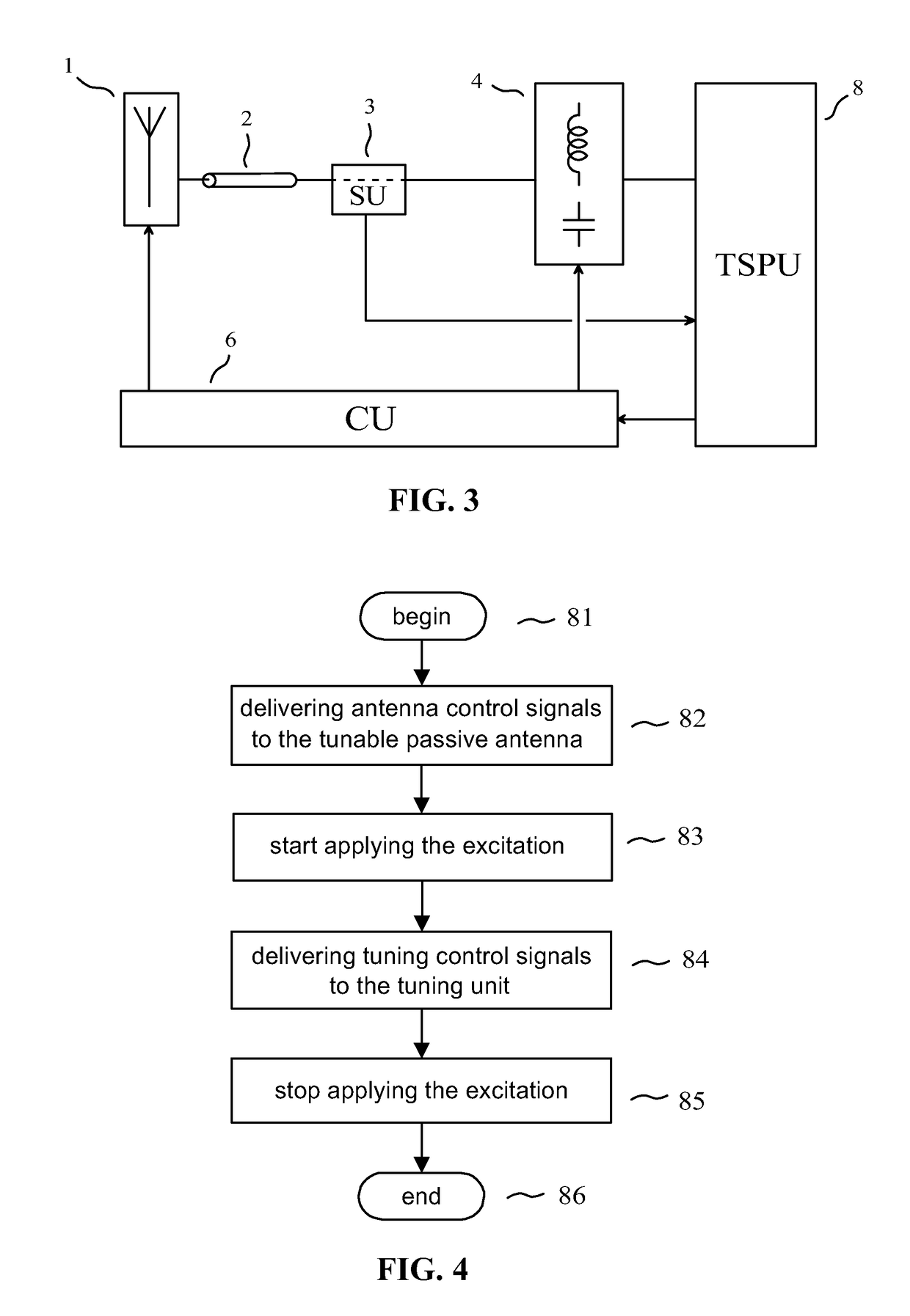Method for automatically adjusting a tunable passive antenna and a tuning unit, and apparatus for radio communication using this method
a technology of automatic adjustment and passive antenna, which is applied in the direction of antennas, particular array feeding systems, transmission, etc., can solve the problems of poor tuning capability, no known solution to the problem, and the adjustment of the single-input-output-output tuning unit obtained using this second example is typically not close to optimal adjustment, so as to maximize or minimize the effect of a performance variabl
- Summary
- Abstract
- Description
- Claims
- Application Information
AI Technical Summary
Benefits of technology
Problems solved by technology
Method used
Image
Examples
fifth embodiment
[0199]The fifth embodiment of a device of the invention, given by way of non-limiting example, also corresponds to the apparatus for radio communication shown in FIG. 3, and all explanations provided for the first embodiment are applicable to this fifth embodiment. A flowchart of one of the one or more adjustment sequences used in this fifth embodiment is shown in FIG. 7. Before the beginning of said one of the one or more adjustment sequences, a “selected frequency” has been chosen by the transmission and signal processing unit in the set of possible values of the carrier frequency of the excitation. In addition to the begin symbol (81) and the end symbol (86), said flowchart comprises:[0200]a process “start applying the excitation” (83), in which the transmission and signal processing unit starts applying the excitation to the input port, so that the sensing unit becomes able to deliver two sensing unit output signals each determined by an electrical variable sensed at the output ...
sixth embodiment (
Best Mode)
[0210]The sixth embodiment of a device of the invention, given by way of non-limiting example and best mode of carrying out the invention, also corresponds to the apparatus for radio communication shown in FIG. 3, and all explanations provided for the first embodiment are applicable to this sixth embodiment. In this sixth embodiment, the excitation is applied continuously, so that the sensing unit can continuously deliver two sensing unit output signals each determined by an electrical variable sensed at the output port while the excitation is applied to the input port. A flowchart of one of the one or more adjustment sequences used in this sixth embodiment is shown in FIG. 8. Before the beginning of said one of the one or more adjustment sequences, a “selected frequency” has been chosen by the transmission and signal processing unit, among the elements of the set of possible values of the carrier frequency of the excitation. Said excitation has, during said one of the one...
seventh embodiment
[0236]The seventh embodiment of a device of the invention, given by way of non-limiting example, also corresponds to the apparatus for radio communication shown in FIG. 3, and all explanations provided for the first embodiment are applicable to this seventh embodiment. In this seventh embodiment, the excitation is applied continuously, so that the sensing unit can continuously deliver two sensing unit output signals determined by electrical variables sensed at the output port while the excitation is applied to the input port. A flowchart of one of the one or more adjustment sequences used in this seventh embodiment is shown in FIG. 8. Before the beginning of said one of the one or more adjustment sequences, a “selected frequency” has been chosen by the transmission and signal processing unit, among the elements of the set of possible values of the carrier frequency of the excitation. Said excitation has, during said one of the one or more adjustment sequences, a carrier frequency wh...
PUM
 Login to view more
Login to view more Abstract
Description
Claims
Application Information
 Login to view more
Login to view more - R&D Engineer
- R&D Manager
- IP Professional
- Industry Leading Data Capabilities
- Powerful AI technology
- Patent DNA Extraction
Browse by: Latest US Patents, China's latest patents, Technical Efficacy Thesaurus, Application Domain, Technology Topic.
© 2024 PatSnap. All rights reserved.Legal|Privacy policy|Modern Slavery Act Transparency Statement|Sitemap



